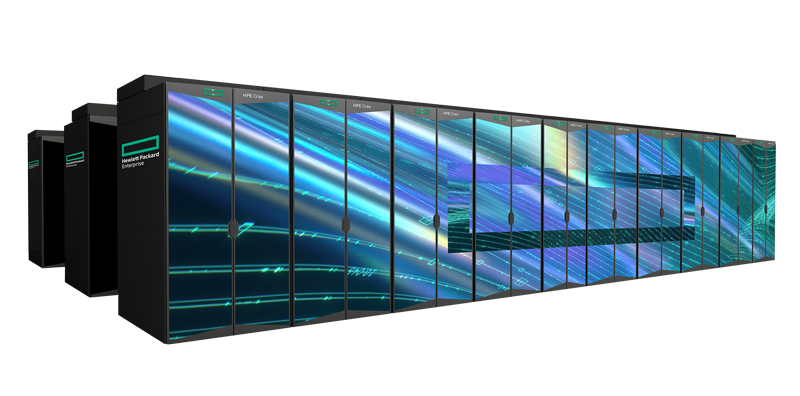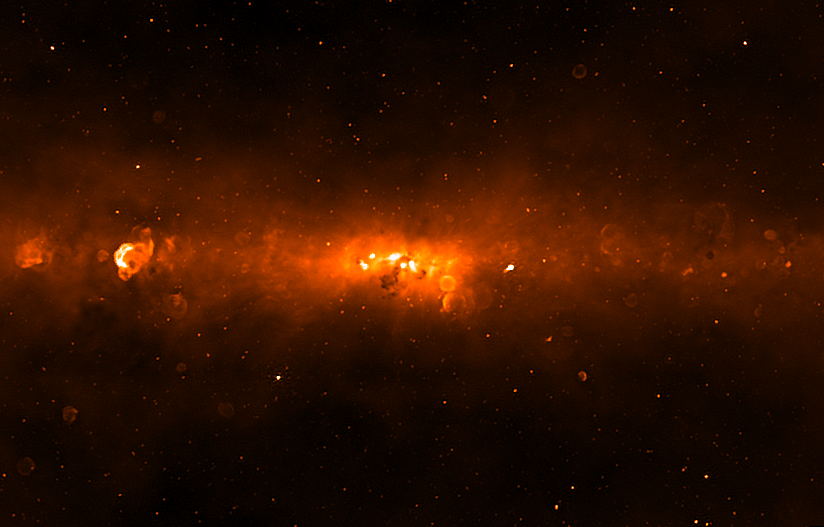
Dr Chenoa Tremblay is harnessing the power of supercomputers to analyse extremely sensitive radio telescope signals. This could give us our first potential evidence of life outside our Solar System. Credit: Pawsey Supercomputing Centre.
Supercomputers are critical for researchers to conduct high-impact research. They’re used in fields such as medicine, meteorology, artificial intelligence, and radio astronomy – just to name a few.
But big problems often have complex solutions, and computing these solutions takes time and energy. Two important factors when you’ve solving global issues while protecting the planet.
Currently, more than 1600 researchers use the Pawsey Supercomputing Centre to support their computing-intensive projects. These projects include discovering new galaxies, developing improved diagnostic tests for coronaviruses, and finding AI-enabled ways to reduce herbicide use.
Australia is backing our research community with the purchase of a new supercomputer at Pawsey. The supercomputer will enable future high-impact Australian research projects by delivering 30 times more compute power than its predecessor systems. All while only increasing energy requirements by 50 per cent.
What better way to celebrate the newest system than to meet a researcher who uses supercomputing in her everyday work?

Pawsey’s new supercomputer will boost Australia’s research capabilities to advance missions from understanding human viruses to discovering new galaxies. Credit: HPE
Introducing Dr Chenoa Tremblay
Meet our Postdoctoral Fellow in Dark Magnetism, Dr Chenoa Tremblay. She uses supercomputing power to find and study atoms and molecules in interstellar space. Her astrochemistry observations are improving our understanding of star and galaxy formation. They underpin a search for signs of life beyond our own here on Earth.
From a love of maths to the Milky Way
From an early age, Chenoa had an interest in maths. “I’d be working on the family farm with my grandfather and he’d always challenge me with maths problems to do in my head,” she recalls.
In high school her interest in science grew after taking more specific subjects like chemistry and physics. But surprisingly, a career in science was never an ambition.
“Growing up in a very small rural community I just didn’t have those sorts of role models. Science was what you saw smart people doing on TV,” Chenoa explains.
“I was familiar with farming and small business, so I thought I could funnel my maths interest into accounting and business. But I didn’t enjoy business school at all. My university roommate was studying biology and chemistry and I was spending more time helping her with her homework than doing my own!
“My friends eventually convinced me I could be a scientist too. So I started studying chemistry at university and absolutely loved it.”
Science with supercomputers
Chenoa uses spectroscopy, the interactions of light and matter, to look for molecules in the gas layers around stars. Molecules in space are bombarded with energy from nearby stars. They can then absorb and re-emit that energy at specific frequencies based on their structure. And, much like our fingerprints, each molecule’s energy signature is unique. Chenoa uses radio telescopes to collect signals across a range of narrow-frequency bands to build up and identify those full-spectrum energy signatures.
“That’s why we need supercomputers to do this sort of research,” Chenoa said.
“We image the sky over a lot of very narrow frequency bands and process all of that information independently. This is to pinpoint the energy absorptions and emissions to specific frequencies with the resolution we need to identify the molecules out there.
“Doing this on my laptop would take 25 years. Pawsey’s supercomputing systems have brought some of our research timelines from years down to days. This gives us the power we need to analyse hundreds of thousands of images quickly. With the signals being very weak, finding new ones will require even more data to crunch.”
Unique solutions for universal problems
Chenoa is working with her research partners to push the study of molecules in space to lower radio frequencies than ever before.
“In the colder regions of space, much larger molecules should be more stable, and emit at these lower frequencies,” she said.
“It’s a very sensitive frequency range to study the chemistry of cold gases. As the emissions are not very intense or energetic we need very powerful new telescopes like the Murchison Widefield Array (MWA) and our own Australian Square Kilometre Array Pathfinder (ASKAP), which are both precursors to the future Square Kilometre Array (SKA), to find them.”

The centre of the Milky Way as seen by the Galactic Centre Molecular Line Survey with the Murchison Widefield Array telescope. Credit: Chenoa Tremblay (ICRAR-Curtin).
Defining star formation
Chenoa’s work is defining the relative importance of different mechanisms of star formation, and how they influence how galaxies evolve. She’s also laying the groundwork to identify ‘biotracers’ – more complex molecules like amino acids and proteins in space with the SKA.
“We already know so much about star formation and the molecules in space. But about 85 per cent of the molecules we’ve found in space are based on carbon,” Chenoa said.
“And we don’t know why. It may be because stars produce a lot of carbon, and it’s easy to make lots of molecules out of it. But we’ve only been looking in the higher frequencies. Carbon may be important to life in general, but we’ve only looked in certain ranges of the electromagnetic spectrum. Looking for atoms and molecules at lower radio frequencies could give us a more complete picture of our place in the Universe.”
Acknowledgements
Pawsey is an unincorporated joint venture of us, Curtin University, Edith Cowan University, Murdoch University and the University of Western Australia.
The new supercomputer is part of Pawsey’s Capital Refresh Program, which is being delivered under a $70 million grant from the Australian Government announced in 2018 to upgrade Pawsey’s supercomputing infrastructure. Pawsey is also supported by the Australian Government under the National Collaborative Research Infrastructure Strategy (NCRIS) through the Department of Education. The Centre would also like to acknowledge the support provided by the Western Australian Government and its partner organisations.
We acknowledge the Wajarri Yamaji as the traditional owners of the Murchison Radio-astronomy Observatory site, where the MWA and ASKAP telescopes are located.

